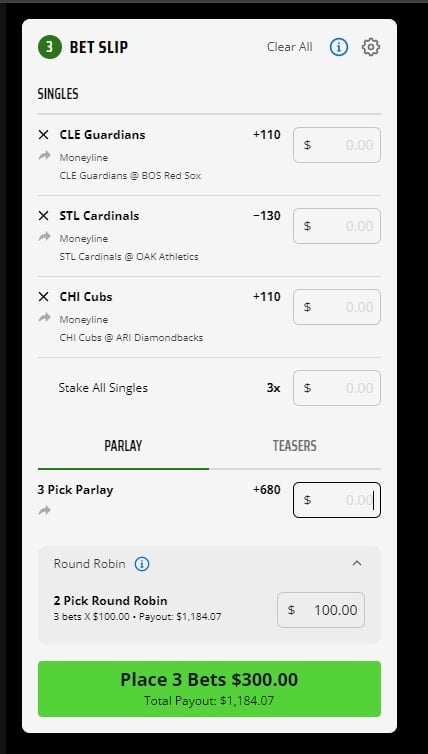Splitting pairs in blackjack can sometimes feel like being caught between a rock and a hard place. Particularly when you are dealt a pair of 7’s. Do you play it safe and stay put, or boldly split and forge a new path toward potential victory? If you are not careful, splitting the 7’s pair can make you lose twice your stake.
TL;DR
Remember, the dealer’s upcard is your guiding star in this situation.
- Split your pair of 7’s when:
- The dealer’s upcard is between 2 and 7. This is because the dealer is likelier to go bust with these cards, and splitting allows you to improve your hand and potentially beat the dealer’s total.
- Do not split your pair of 7’s when:
- The dealer’s upcard is 8 or higher, or an Ace. The dealer is less likely to bust with these cards, and you’re likely to lose if the dealer has 18 or better, so it’s safer to take a hit.
- You’re playing a game with no double after split (NDAS) rule. In these games, it’s generally less advantageous to split pairs.
If it’s between 2 and 7, consider splitting your 7’s. In this scenario, the dealer might have a total of 12 through 17. Most of these hands are stiff and are likely to bust. If you split your 7’s and assume you catch a ten, you’ll have a total of 17, which will beat all those totals except for 17 itself, and the dealer still has a good chance of busting.
However, if the dealer’s upcard is 8 or higher, or an Ace, then take a hit. In this scenario, if the dealer has an 18 or better, you will lose most of the time. Therefore, there’s no point in putting more money at risk by splitting your 7’s. Instead, take the hit and hope you get lucky.
Reasons To Split 7’s in Blackjack
Players are holding a 14 when they have a pair of 7’s. Out of the four options, including a fifth if available at the table, splitting 7’s increases your winnings when the dealer is in an unfavorable situation.
Hitting a 14 runs the risk of going bust since there is a chance of drawing 10’s, 9’s, or 8’s. The ideal card is a 7, 6, or 5 since these get you to 21 or closer. However, there is also a chance of drawing cards that leaves you with a weaker hand. While we are on the subject, the exact reasons for not hitting can be applied to doubling down. The slight chance of drawing three ideal cards makes the risk of doubling your stake a bad option to consider.
You can get a soft hand with an ace for a soft 18, allowing you to hit without the risk of going bust for an even better hand. Splitting 7’s allows you to break apart your 14 hands and draw better cards. Low-valued cards such as 3’s or 4’s can leave you with a 10 or 11 hand, allowing you to safely double down (if the table allows players to double down after splitting their hand).
The Dealer Has a 2 to 7 Upcard
Ideal scenarios on when to split 7’s in Blackjack is when a dealer has a 2, 3, 4, 5, 6, or 7 upcard. A six-card or lower valued card tends to be a losing scenario for the dealer likely to have a hand value of 16 or lower.
You are splitting 7’s when the dealer has an eight or lower to take advantage of their chances of going bust. Remember that nearly every casino table, including online blackjack tables, requires a dealer to keep drawing until they have a 17 or higher. Dealers can only hit on hard hands, even if it means going bust in most games.
A 7 card can grant you decent hands that can go up against a 17 if the dealer manages to get the right cards. There is a good chance you can draw low-valued cards to double down on while the dealer has a chance of going bust.
Remember that splitting 7’s will not grant you a strong hand against a dealer with an 8, 9, 10, or an ace. The best hand you can make with one of your 7’s is an 18, which still has a higher chance of losing against an eight-revealed card or higher.
If the dealer has an 8, hitting allows you to increase your 14 to a 20 or 21. Splitting is an ideal play against an eight if the “late surrender” option is available after breaking apart your pairs. There is a chance of getting winning or pushing a hand by splitting 7’s. Surrendering one or two of the split hands is a calculated risk that lets you soften the damage if luck is against you on the draw.
Surrendering is profitable if the dealer has a 9, ten, or an ace. In these scenarios, hitting will only grant you a slim chance of pushing against a 20 or 21. By surrendering, you can cut your losses against a possible strong hand. If the option to surrender is unavailable, you should hit.
The Risk of Not Splitting
On the other hand, let’s consider what happens if you don’t split your 7’s against a dealer’s 6. You stand with a total of 14. The dealer flips their down card and, lo and behold, it’s a 10. Their total is now 16. They draw another card – it’s a 3. Now the dealer’s total is 19. Your 14 doesn’t look so good anymore, does it? If you had split your 7’s initially, you would have had two opportunities to better your hand, potentially beating the dealer.
It’s important to remember that this strategy is based on statistical probabilities and not guarantees. There will always be rounds where this strategy doesn’t pay off, but it can improve your odds in the long run.
Playing Hard 14 in Specific Scenarios
What if you are holding a hard 14, which you cannot split? Having 7’s gives you an option that increases your chances of winning. Below are the ideal options for specific scenarios while holding 14.
The Dealer Has 8 or 9
According to most blackjack strategy charts, hitting is your best option since a 14 is likely to lose against a dealer’s 17, 18, or 19 when you stand. The idea is to get a 20 or a 21 upon hitting and beating the dealer’s hand. However, there is also a chance of drawing a 10, 9, or eight that can ruin your hand.
Standing is not profitable, with a hard 14 against an eight or nine. This option may seem ideal to avoid going bust by skipping the draw, but your chances of the dealer obtaining a 16 or lower are slim. Hitting can still improve your chances of winning against the dealer or getting a draw.
Surrendering while holding 14 is also not a good idea here. With an eight or nine, the dealer must still have an ace or 10 to have a strong hand against you. They may hold a 16 or lower hand with an eight or nine, forcing them to draw until they go bust or get at least a 17. Standing is better than surrendering since you can still win when the dealer has an eight or nine.
The Dealer Has Ten or Ace
Unless the dealer has a natural blackjack, you face a 20 or a soft 20 with a ten or an ace. Aces are incredibly tricky since they give the dealer a chance to safely draw cards for a better hand. It will help if you surrender when holding hard 14 against these two hands since the dealer will likely have a 19 or 20 here.
Hitting will be the ideal alternative if you cannot surrender since this will give you a slim chance of winning or pushing. Standing should never be considered since the dealer will likely have a winning hand when holding a ten or ace.
Splitting 7’s pair lets you take advantage of dealers with a hand that will likely go bust. However, you should consider hitting or surrendering if the dealer holds a nine or higher card instead of splitting.
This article was published on June 16, 2023, and last updated on June 16, 2023.















